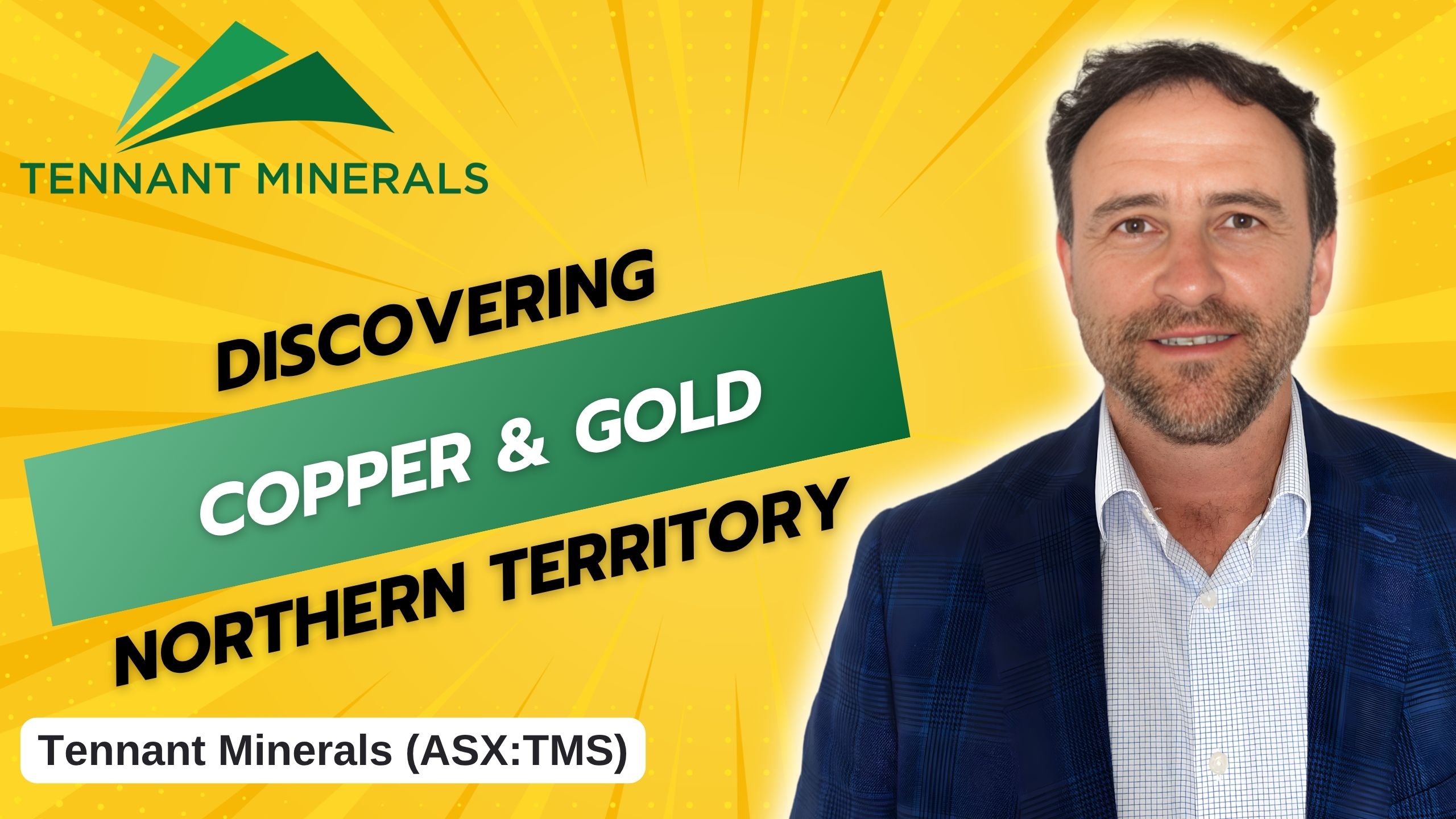Transcription of The Stock Network Interview with Tennant Minerals (ASX:TMS), General Manager of Geology, Chris Ramsay
Lel Smits: Tennant Minerals is an exploration business advancing its Berkeley Copper and Gold Project in the Northern Territory, located within the renowned Tennant Creek Mineral Field, a region that has historically produced more than 5 million ounces of gold and around 700,000 tons of copper. Tennant Minerals General Manager of Geology, Chris Ramsay, joins me to discuss the company’s latest developments and the future potential of the Berkeley Project. Chris, welcome to the Stock Network.
Chris Ramsay: Thank you, Lel. Pleasure to be here.
Lel Smits: Now, you’re a veteran of the global mining industry with more than 25 years of experience across a range of commodities and also geological settings.
Could you share a bit about your professional background? Also, what led you to join Tennant Minerals?
Chris Ramsay: Thank you. Yes, a veteran sounds like I’ve been here a long time, but I guess 25 years is a significant period. It doesn’t feel like it.
I often describe my career as if I’ve been backing up the decline for all these years. I started off in production roles, in underground roles and open pit mines and copper and gold projects across the gold fields, the Pilbara, New South Wales, and New Zealand. Following a long period in production, I had an inkling that I wanted to be involved in resource geology and project evaluation.
So I embarked on those specialist areas of our industry and have worked in project development roles across Australia and Asia and Africa over the period. And now I’m working in a development role here at Tennant, which involves a lot of exploration. So I think my journey has, it’s a great fit for Tennant Minerals.
Tennant Minerals, there’s some good people in the greater group where I work. So that’s been attractive. And, you know, the Tennant Creek mineral field is rich and it’s building for the next great surge in development.
So that’s very, that’s attractive, you know, and altogether I’ve had a fabulous and rewarding career and Tennant Minerals is just the next step.
Lel Smits: Wonderful. Well, looking closer at that next step, copper and gold prices are really close to record highs now and Tennant Minerals has just announced its maiden high-grade open pit mineral resource for the Bluebird Copper Gold Discovery.
From a geological perspective, what makes the Buckley Tenure and Bluebird deposits so appealing for you?
Chris Ramsay: Well, you know, over the long and storied development history of the Tennant Creek mineral field, there’s been some very, very unique and very high-grade copper gold discoveries and some fabulous operations over time. Now, I think when a field has been quiet for a number of years, you know, the economics and the technology pass them by and then there’s always a new opportunity to revisit. And, you know, we’ve certainly, but Bluebird is a new discovery and that’s what’s interesting about that, that new discoveries can be made with good science and geophysics.
And, you know, in our cohort of explorers are really gaining momentum as well in the region. So that’s great. You know, our mineral resource is moderate in size but high-grade.
You know, we’ve got, with our new resources, nearly 1.6 million tonnes with a copper equivalent grade of 3%, which importantly includes the, you know, 1.4% of copper and the remaining 1.6% made up of precious metals and critical minerals, all eminently recoverable and widely proven to be so. And even more importantly is the nearly 80% of the contained metal in our deposit is classified in the indicated category, which is a testament to the detailed work that we’ve done and the confidence we have in the deposit. So there’s, you know, there’s more than 50,000 ounces of gold, more than 20,000 tonnes of copper, more than 130,000 ounces of silver.
And of course there’s business there to boot. And we’ve limited the resource report to 180 metres below the surface. So there’s still a lot of underground potential there and we have significant underground intercepts including nearly 18 metres at 4% copper and nearly 15 metres at 3 grams per tonne gold.
So significant known upside already. And we’re looking forward to developing that underground resource further.
Lel Smits: And Chris, following the announcement of this new high-grade resource, what are some really key catalysts for investors to look forward to from Tennant Minerals over the remainder of the year and into the new year?
Chris Ramsay: Well, you know, our key catalysts are the new geophysical data and new geophysical modelling that has shown what we believe to be likely high-grade extensions of the underground resource at Bluebird.
And the geophysical data tells us where the dense rocks are, the gravity data. And we’ve now identified this highly dense zone that is directly parallel with the Bluebird high-grade resource that we already have. So we’re excited by that.
We will look at some near-term drilling to further analyse the metallurgical characteristics of the ore that we have. And what one of the other catalysts there too is the Tennant Creek Copper Alliance, which people will know as a collaborative study into the mineability and processability of the ore across the cohort that I mentioned, which includes CUFE and Emerson Resources. So with that kind of bulk tonnage behind the study, it’s easy to envisage a pathway to production.
So we’ll be continuing that alliance and, you know, we’re really well-positioned, yeah.
Lel Smits: Great to hear, Chris. Really appreciate the update from Tennant and look forward to hearing more in the coming months.
Chris Ramsay: Fabulous, pleased to present it. And we are really excited. Thank you.
Ends
